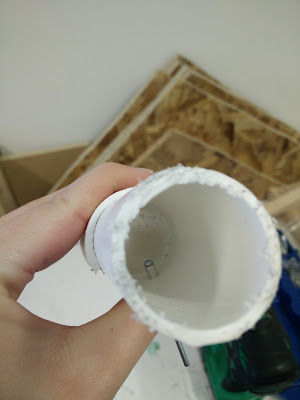It is important to develop this project not only in terms of the bird itself, but also the costume as a whole - this includes a rider.
I started fleshing out her character further by creating this rhyming lymerick-al account of the freeing of the Dodo, fleeting over the pair's background together and how they found each other.
"Sophie was a Scientist who studied every day, but when she heard of the cruel and absurd, the laboratory who recreated a sacred bird, she reacted with dismay…
You see, the laboratory didn’t care for the kind heart and trusting mind; their eyes were laid upon subjects of the meaty kind: The Dodo, a big, bold bird, once stood tall at three feet high.
But the laboratory created a larger, bulbous thigh: A big head and big brain, a puffball chest, a beefy body and a fluffy tail crest, standing at a sturdy five feet tall: a large, friendly fellow who came to call. This reincarnation was no act of kindness, but an act of selfish absent-mindedness; a chunky profit in the meat industry - for the knife was this bird’s destiny.
One quiet night at the laboratory, Sophie swept in with a stolen key. She snuck her way inside its white walls, weaving in and out the halls, until she stumbled upon…
Our friendly bird Beef, with curious eyes - they stared each other down with blank surprise. Quietly unlatching the door, Sophie lured Beef from the laboratory’s core, and the pair sprinted to freedom through the cool of the night, into Sophie’s home upon the fifth flight.
Comically round in the cube of the flat, Beef seemed to be feeling rather fat - he squeezed through the doorway, helping himself to the tempting fruit on the kitchen shelf. Sophie had no quarrels: as she quizzed in her head, planning to make Beef a comfy bed.
Sophie laid awake that night, the lounge was dark but her mind shone bright. For as Beef slumbered in the master bedroom, she was driven to save others from doom: you see, not only Beef was at peril that night, and with this one must embrace the animal lovers’ plight: If you love them, leave them be - for all animals should be safe and free."
Sophie's stats are that she is a 24 year old Conservation Scientist. She is an only child that comes from a working class family, and is the first of her family to have been to university. She works in a laboratory in London and is renting a small fifth floor flat which is full of curious and anatomical models she's saved from the bin at work and the local museums. She has a very bold and some may say... tacky fashion sense, but it's certainly unique. She loves old music like Fleetwood Mac and has an extensive record collection. She is incredibly stubborn and doesn't like being told she can't do things. However, with that stubbornness comes determination, and it's this determination that helped her save Beef from the peril of the meat industry.
Sophie has long, curly brown hair and tends to favour clothes that you wouldn't usually expect to see together. She wears a cream Victorian-style frilly shirt that she found in a charity shop which helps to give her the confidence to be the person she wants to be. It is also cool enough to wear in the summer months whilst still looking as fancy as she wants to be.
Sophie's suede flared trousers are her favourite part of this outfit, and they're straight out of the seventies. Somehow they manage to tie her outfit all together - perhaps because they're so outrageous. They suit her natural colour palette well and have a tactile softness that matches her bird, too.
Sophie's chequered socks are her idea of bringing a little bit of punk into her life. Unfortunately, she also decides to wear them under a pair of sandals, unfortunately destroying any element of coolness that they bought to her outfit.Sophie is quite a shy character, though - but when she dresses up for festivals, her bold clothing choices help to bring out her confident side in interacting with the public as they're amazed and intrigued by her giant Dodo friend,
Sophie chose to wear gummy sandals over her socks because they remind her of the freedom and excitement of being a child. Her mother bought her a pair from the big shoe shop in town and she loved them - until she grew out of them a few months later. She was adamant that she needed to get another pair to fit her adult feet, and has treasured them in their glittery gold glory ever since.























































